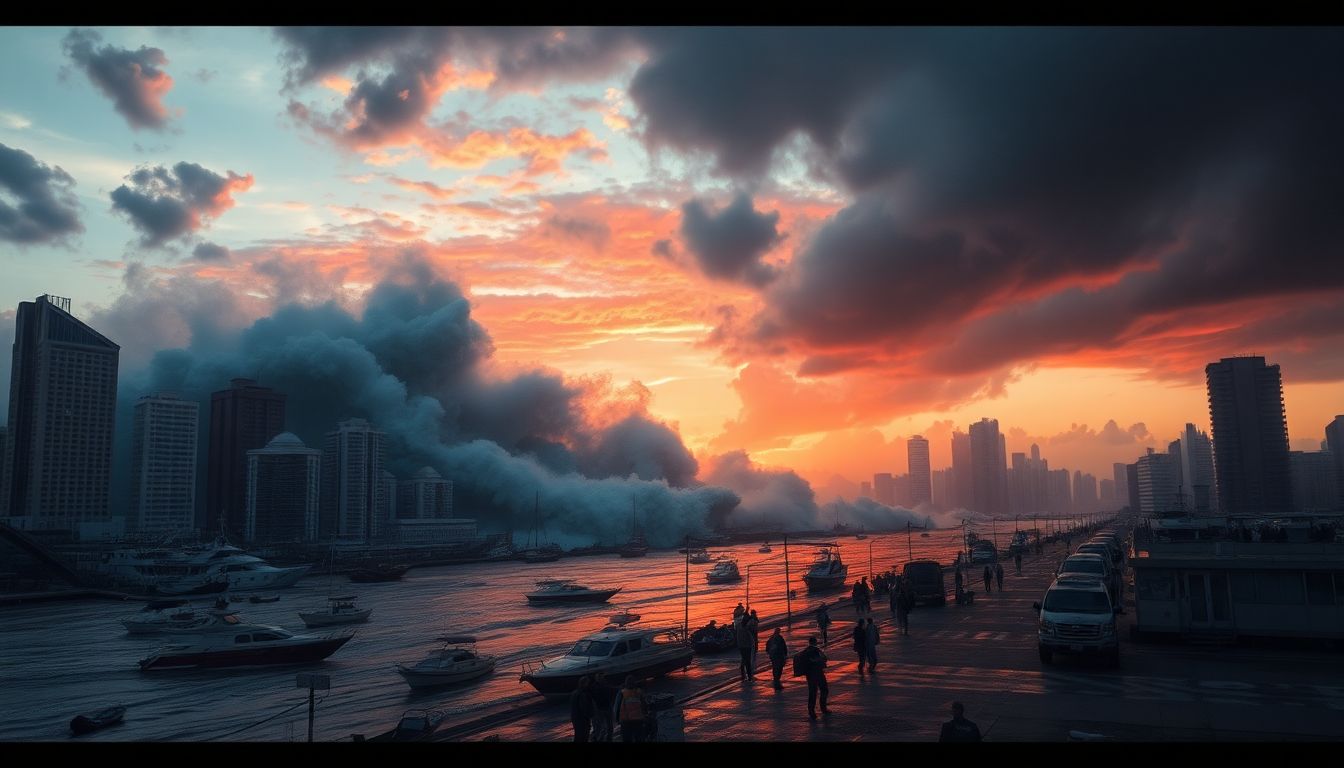Natural disasters have fascinated mankind since time immemorial. They remind us how feeble human existence is when unrestrained forces of nature come to play. Movies inspired by disasters give us a person to witness all that is shown on a big screen and engage us. Such movies are loved not only by adrenaline junkies and disaster-lovers alike but also impart knowledge on the workings of nature and its dangers. Realistic portrayals in films can create an awareness about the raw calamities existing in reality, thereby laying the groundwork for better preparedness. Hollywood plays a huge role in such initiatives, dramatizing the scientific backgrounds and narratives that linger on in minds.
A Brief Evolutionary History of the Disaster Genre
Historical Milestones in Disaster Cinema
Early films like The Mountain Eagle and Earthquake began the journey of disaster cinema. The 1970s brought a wave of success with films like The Poseidon Adventure and The Towering Inferno, showcasing chaos and destruction.
Technological Innovations
Modern CGI has revolutionized the disaster genre. Films like San Andreas (2015) and Geostorm (2017) use advanced effects to depict massive calamities realistically and viscerally.
Cultural Context and Acceptance
Disaster films often echo societal fears—climate change, storms, and natural threats. Movies like Twister and 2012 have become global hits, showing the genre’s widespread appeal.
Types of Natural Disasters in Films
Earthquakes and Tsunamis
San Andreas, Dante’s Peak, and The Impossible showcase the terror of seismic and tsunami events. Such portrayals help spread awareness of the dangers and the importance of preparedness.
Hurricanes and Tornadoes
Twister and Night of the Twisters immerse viewers in destructive atmospheric phenomena, offering both thrills and education on storm survival.
Volcanic Eruptions and Wildfires
Dante’s Peak, Everest, and Only the Brave reflect the devastation caused by volcanic activity and wildfires, highlighting the need for evacuation readiness.
Floods and Tsunamis
The Day After Tomorrow and Poseidon dramatize flooding scenarios due to rising seas or tsunamis, bringing attention to real-world risks like climate change and coastal vulnerabilities.
Other Disasters
2012 and Meteor deal with landslides and cosmic threats, underscoring nature’s capacity to surprise and overwhelm us.
Realism and Scientific Accuracy in Disaster Films
The Significance of Scientific Reality
Many films consult experts to ensure scenes are plausible. This realism boosts public understanding and encourages preparedness.
Common Exaggerations
Despite efforts for accuracy, movies often exaggerate events for dramatic effect. These liberties can create false expectations about real-world survival and response.
Entertainment Plus Education
Films like San Andreas may be over the top, but they spark curiosity and promote discussions about real preparedness strategies.
Impact of Disaster Films
Raising Awareness
Disaster films have inspired people to think about safety, form emergency plans, and understand potential risks in their areas.
Influencing Policy and Planning
Governments and organizations have sometimes adapted emergency drills and preparedness initiatives influenced by popular disaster films.
Criticisms and Limitations
Over-dramatization may lead to misinformation or oversimplified solutions, detracting from practical disaster response education.
A Peculiar List of Disaster Films
Classics
- Earthquake (1974): Massive quake in San Francisco.
- The Towering Inferno (1974): Skyscraper fire drama.
New-Age Blockbusters
- San Andreas (2015): Earthquake chaos and rescue.
- Deep Impact (1998): Asteroid threat and survival.
International Films
- The Wave (2015, Norway): Coastal town disaster.
- Tsunami: The Aftermath: Based on real events in Japan.
Climate Change & Environmental Disasters
- The Day After Tomorrow (2004): Climate-triggered cataclysm.
- Geostorm (2017): Tech-driven global disasters.
Actions Inspired by Movies for Disaster Preparedness
- Understand local hazards: Stay informed about the types of disasters that could affect your area.
- Emergency kit: Stock essentials like water, food, batteries, first aid, and documents.
- Create and rehearse evacuation plans: Ensure everyone knows where to go and what to do.
- Stay informed: Use alerts and apps to track storms and emergencies.
- Community training: Join local drills or volunteer efforts to enhance readiness.
Conclusion
Disaster films are both thrilling and informative. They remind us of nature’s power and the importance of staying prepared. While cinematic effects may exaggerate, the core message of awareness, education, and readiness remains vital. Watching disaster movies can inspire a smarter, safer way of living.




